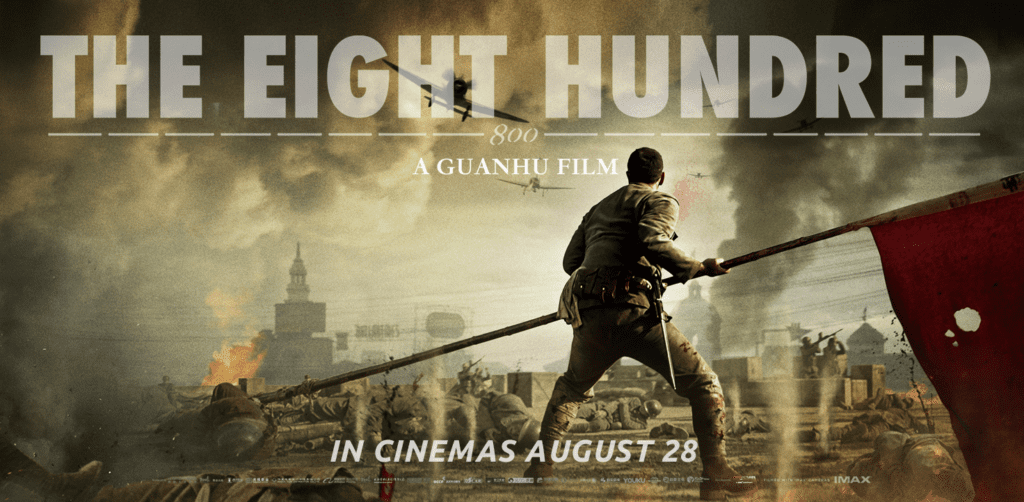 The Eight Hundred theatrical release poster
The Eight Hundred theatrical release posterAs a young kid, I loved to watch WWII movies. I was in awe of the visceral reality of battle: the gruesomeness and cruelty, but also the brotherhood between compatriots and the rare moments of humanity from soldiers and civilians. Because the fighting always took place in Europe, I thought that suffering, death, and triumph were limited to white people only. I was unaware of the Chinese people’s struggle and survival during the war, so I unconsciously stripped them of their agency.
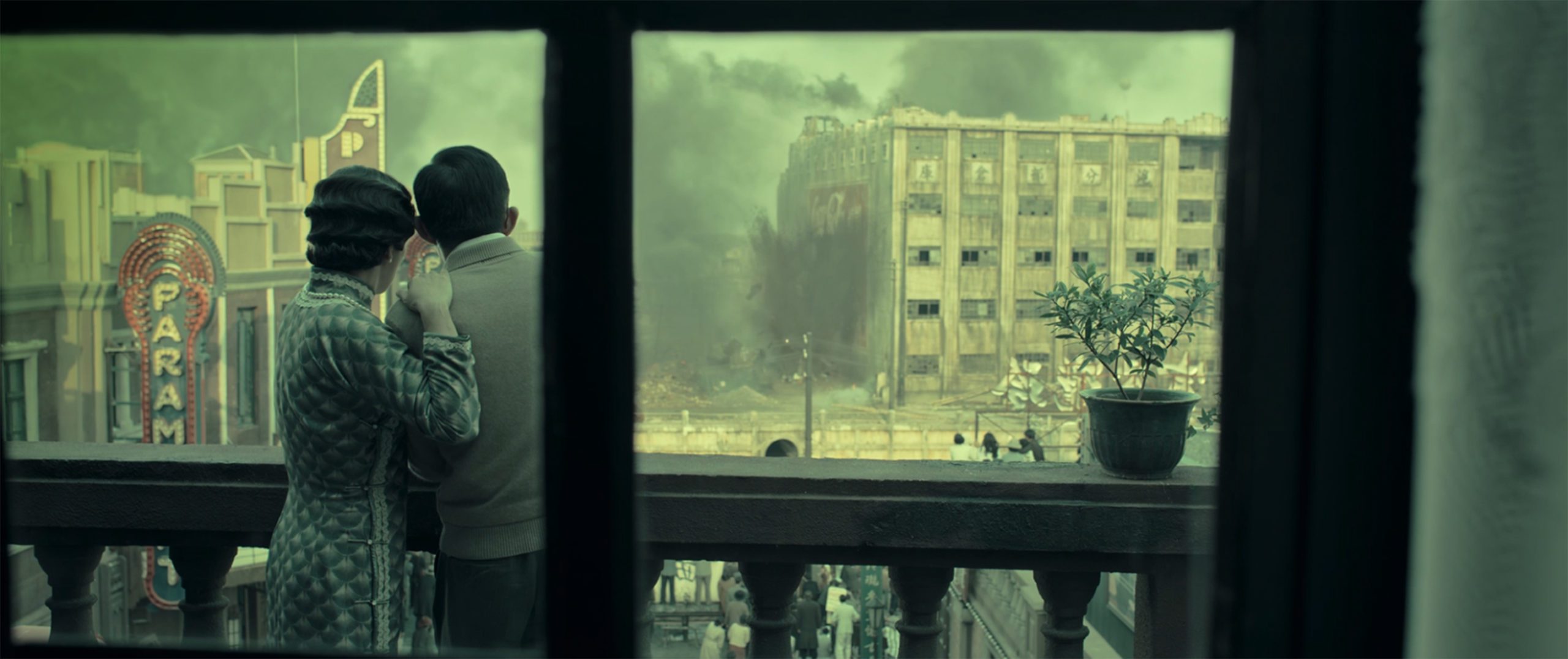 A Shanghainese couple hopelessly watches as the battling unfolds
A Shanghainese couple hopelessly watches as the battling unfolds
What Guan Hu’s new war epic, The Eight Hundred, does for the WWII film genre is showcase Chinese heroes for the first time. The film finally does justice to the brave fighting that took place in the Pacific Theater. In 1937, the Japanese launched a full-fledged assault on Shanghai, believing they could capture the city in three days. They used all their strength — a combination of air, naval, and ground forces — to invade the coastal city.
Set during the end of the Battle of Shanghai, The Eight Hundred follows the remaining National Revolutionary Army (NRA) troops as they make their last stand at Sihang Warehouse, a former storage building. The rest of the Chinese Army has all but been decimated. Generalissimo Chiang Kai-Shek has ordered Colonel Xie and his prestigious 88th Division — the best of the German-trained divisions — to defend the warehouse at all costs. The total number of troops is estimated to have been 414, not 800 (an inflated number given by Colonel Xie to intimidate the enemy).
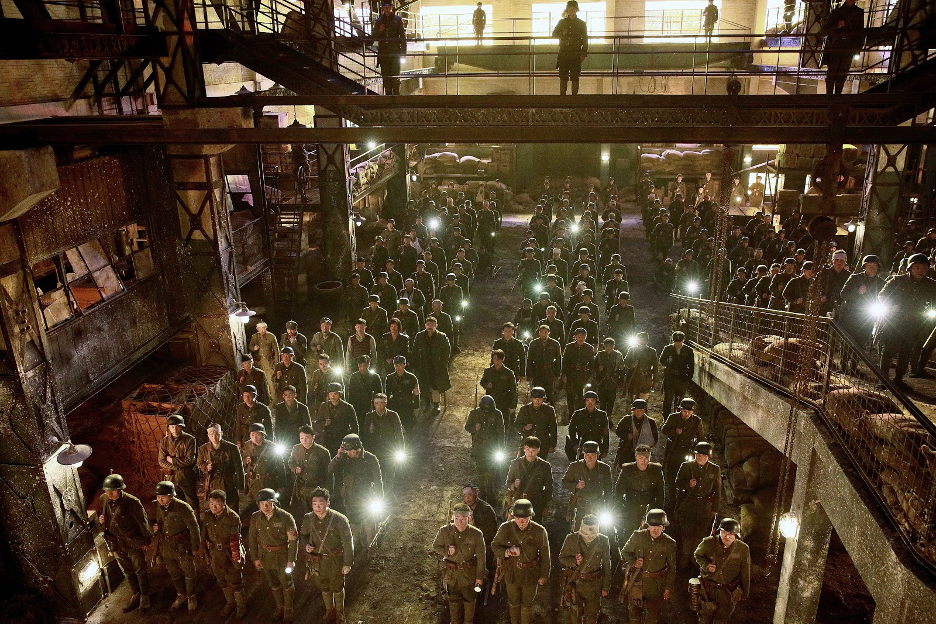 The 88th Division assembles in Sihang Warehouse, waiting for orders from Colonel Xie
The 88th Division assembles in Sihang Warehouse, waiting for orders from Colonel Xie
Strategically separated from foreign concessions by the Suzhou River, Chiang Kai-Shek hopes that a valiant defense would garner international support for China. A successful defense of the warehouse would provide a much-needed morale boost after a devastating defeat to the Japanese.
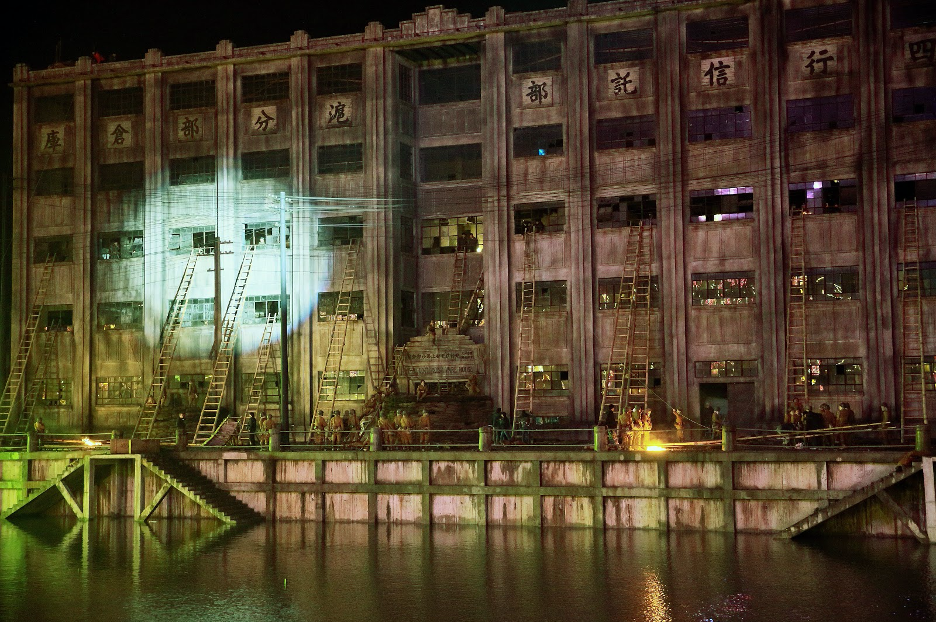 Japanese soldiers launch a surprise attack on Sihang Warehouse using ladders to scale the building
Japanese soldiers launch a surprise attack on Sihang Warehouse using ladders to scale the building
The contrast between concession land and the fighting is drastic. Civilians casually spectate as Japanese soldiers ferociously assault the warehouse. The Japanese are limited to using infantry, as heavy artillery can potentially harm the foreigners across the river. The desolate landscape surrounding Sihang Warehouse accentuates the beauty of brightly-lit Shanghai. Soldiers watch the other shore with envy, entranced by its otherworldly lure. As one of the regiment members says, “The other side is heaven. This side is hell.”
The film showcases the real-life efforts of Chinese civilians to help in any way possible. They hung up large posters warning soldiers of surprise Japanese movements. Shanghainese citizens also donated more than ten truckloads of aid to the warehouse, providing critical resources such as ammunition, gun lubricant, first-aid equipment, and food. Without their contributions, the defense of Sihang Warehouse would have been much shorter.
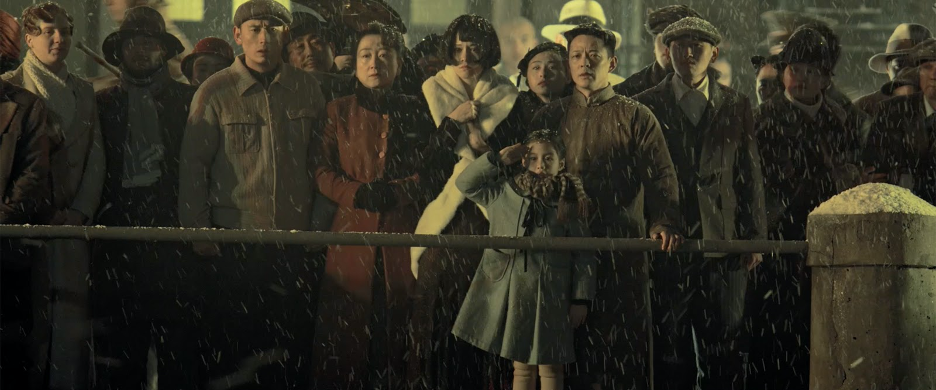 A young girl salutes the bravery of “The Eight Hundred”
A young girl salutes the bravery of “The Eight Hundred”
A giant media blimp hovers over the Suzhou River, where photographers try to get a perfect snapshot of the action. Although the swarm of foreign news reporters may seem exaggerated, the number is not far off from real life. Journalists risked their lives to get as close to the fighting as possible. The location of the warehouse, where combat was so accessible, was a rare opportunity for reporters. As a result, the entire world was watching Sihang with fervent attention.
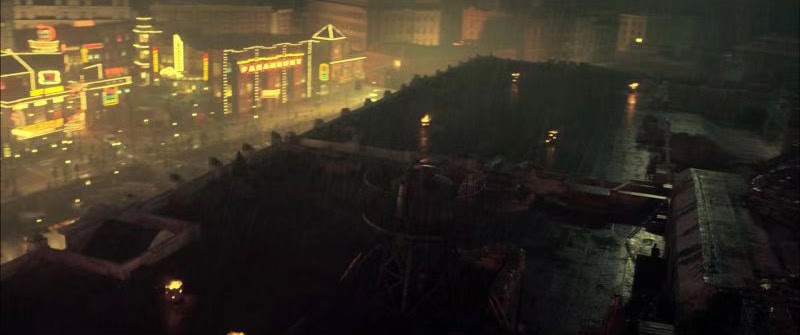 Foreign concessions and Sihang Warehouse separated by the Suzhou River at night
Foreign concessions and Sihang Warehouse separated by the Suzhou River at night
Although the battles are somewhat dramatized, the general plot is real. Guan Hu even consulted WWII historians to recreate Japanese and Chinese fighting formations. The 88th Regiment holds out for four brutal days, later falling back to foreign concessions on the fifth day. Instead of being treated as heroes, the Chinese soldiers had their weapons taken away and were arrested by the British under diplomatic pressure from Japan. The film accurately captures this sad but true fact.
When the Japanese invaded concessions later in the war, most of the remaining “Eight Hundred” were either imprisoned or sentenced to hard labor. Colonel Xie was killed by his own men who were collaborating with the Japanese puppet administration in China.
 The remaining members of the 88th Division retreating to foreign concessions while being shot by Japanese soldiers
The remaining members of the 88th Division retreating to foreign concessions while being shot by Japanese soldiers
The film focuses more on the fighting itself than the individual actors. Besides Colonel Xie and Yang Huimin, the girl who smuggles a Nationalist Party flag to the soldiers, all the other characters are fictional. Guan Hu uses these made-up characters to fulfill narrative roles, and their backgrounds and individual personalities are never explored. Like in real war, no characters receive special attention. Everyone is subjected to the same fate: either victory or death.
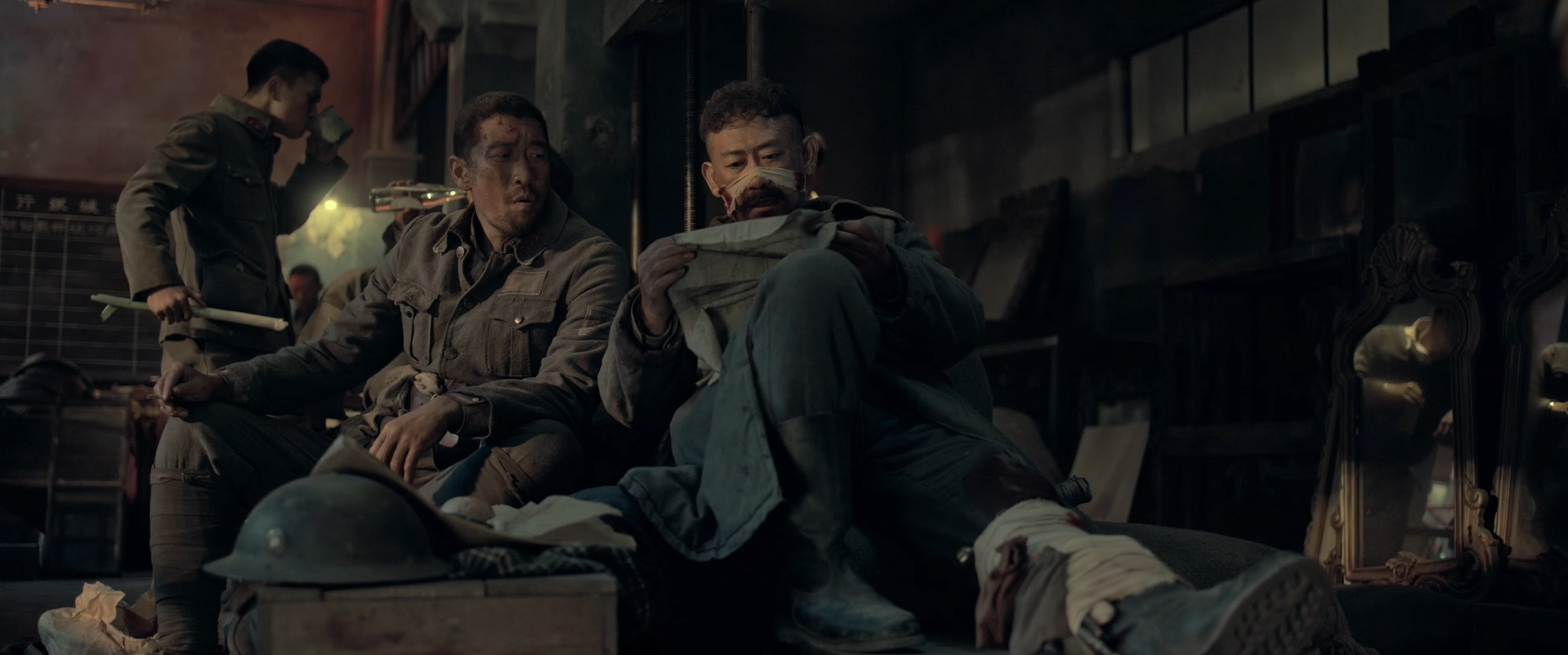 Chinese soldiers anxiously waiting for the first wave of assaults by the Japanese
Chinese soldiers anxiously waiting for the first wave of assaults by the Japanese
Yang Huimin’s brave feat that provided the 88th Regiment with the Flag of the Republic of China is a true event. Her selfless act allowed for the soldiers to raise the flag — a touching scene rendered by the film. Reportedly over 30,000 citizens gathered from across the river to watch this pivotal moment, shouting “Long live the Republic of China!” The raising of the flag proudly declared to the world that China will not be easily defeated.
 Yang Huimin proudly holding the Flag of the Republic of China before delivering it across the Suzhou River to the “Eight Hundred”
Yang Huimin proudly holding the Flag of the Republic of China before delivering it across the Suzhou River to the “Eight Hundred”
The Eight Hundred is a rare war drama that captures the patriotism, heroism, and sacrifice of Chinese soldiers. It is a heart-wrenching story that deserves just as much attention as any Western WWII film. Critics have been quick to call the film Chinese propaganda, but how does it differ from any American war movie celebrating its soldiers? The difference is that the main characters are Chinese — a fact that is still uncomfortable for Western audiences.
The Eight Hundred Trailer (2020)

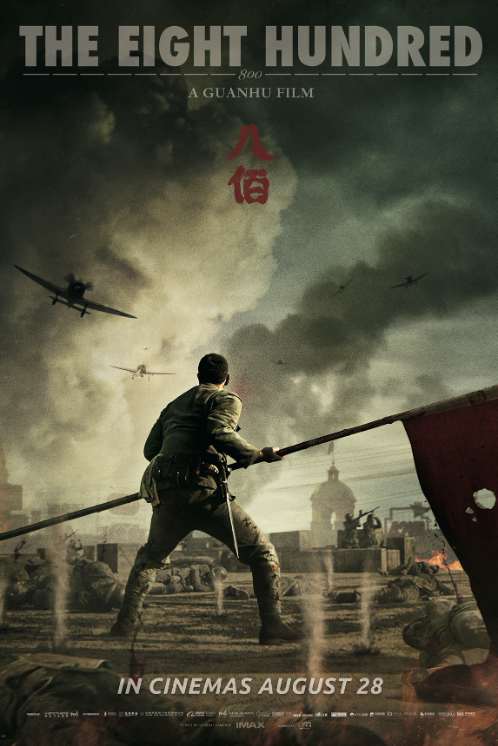
0 Comments